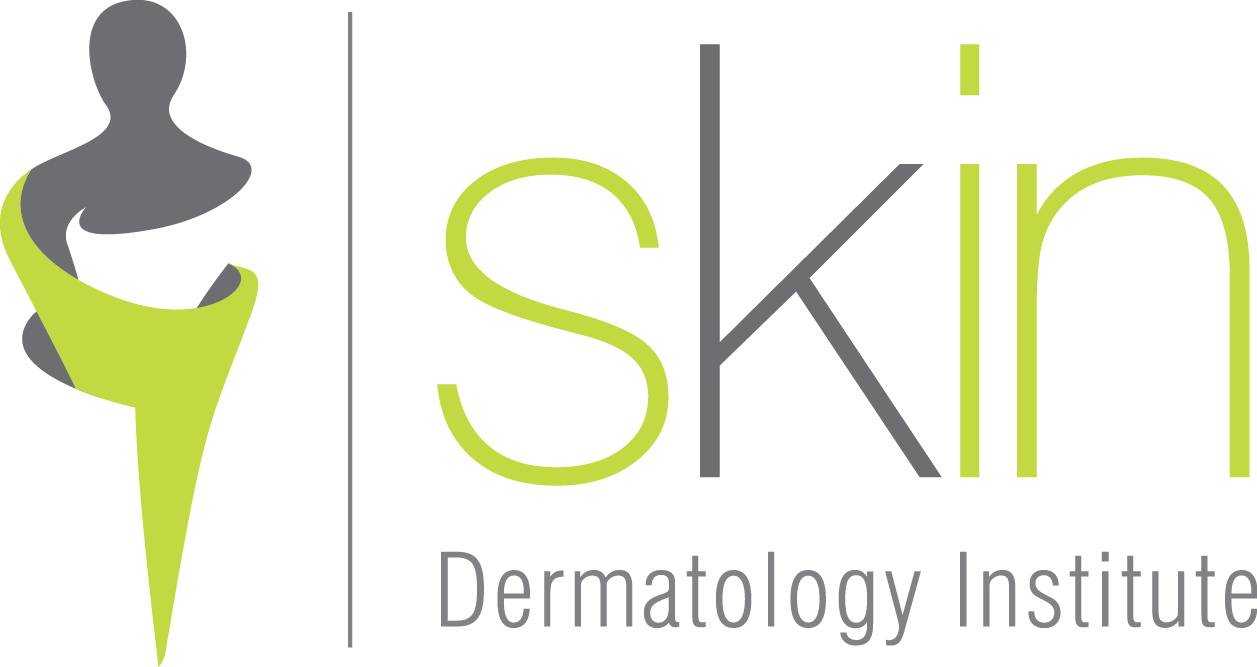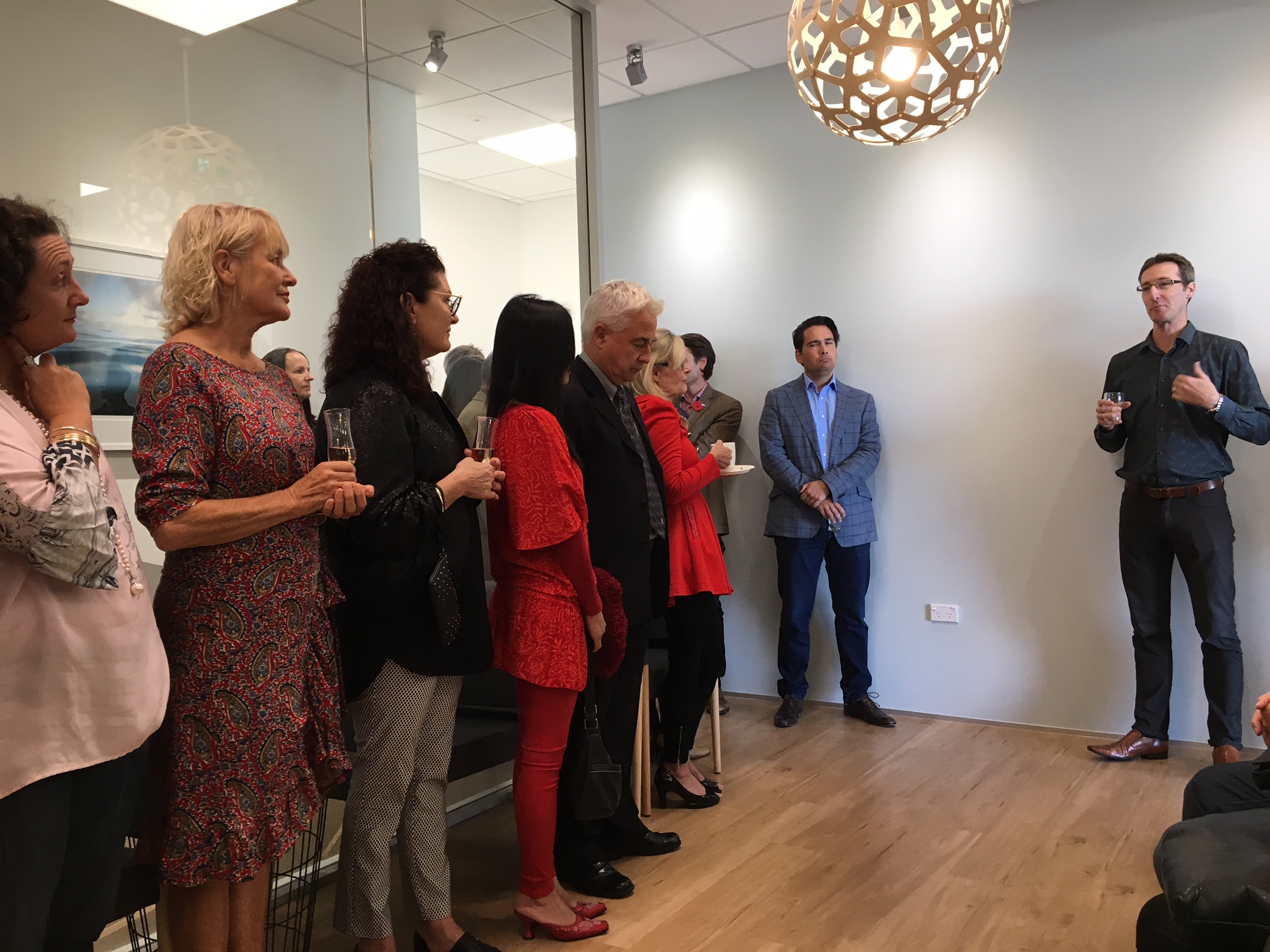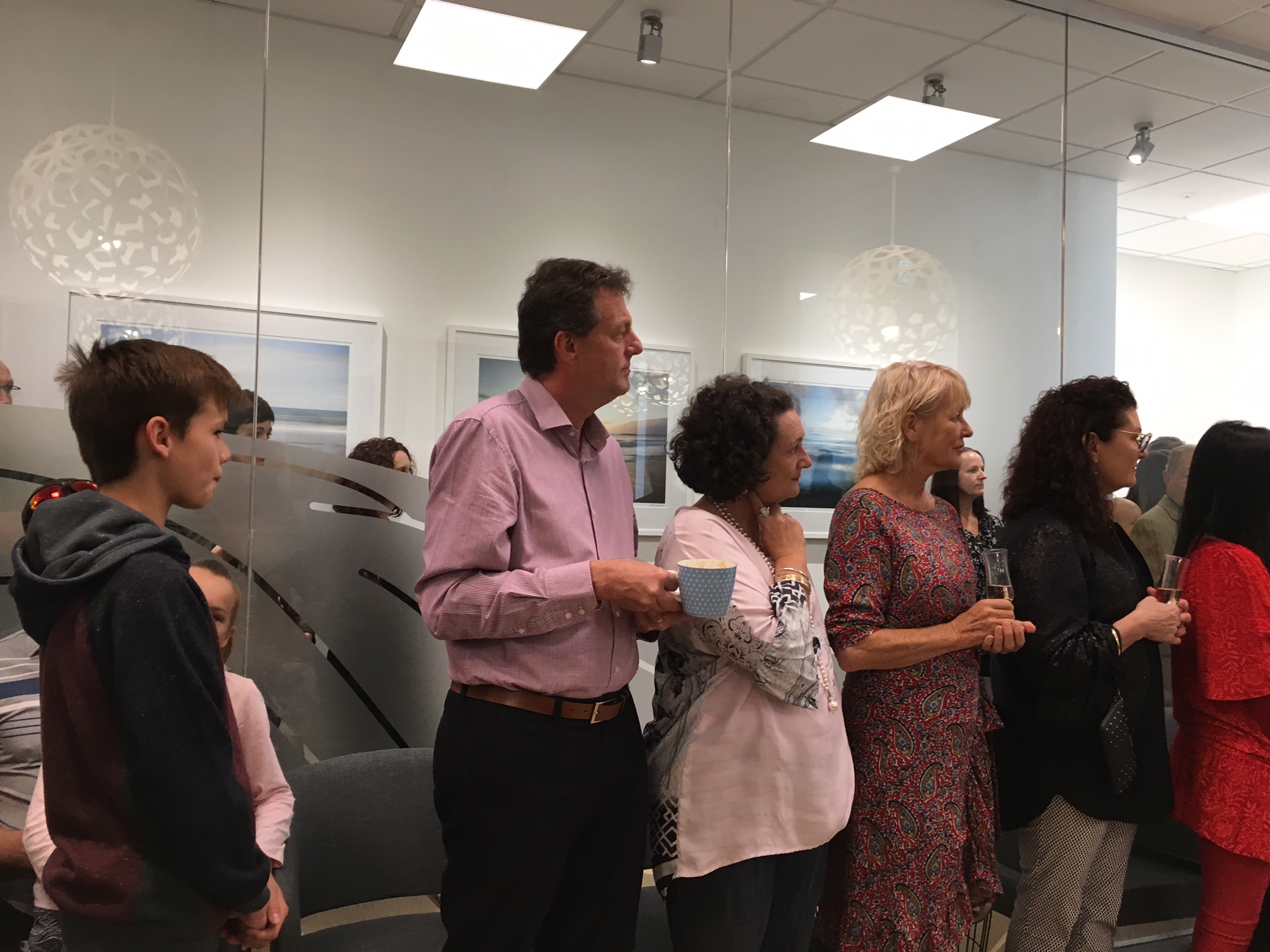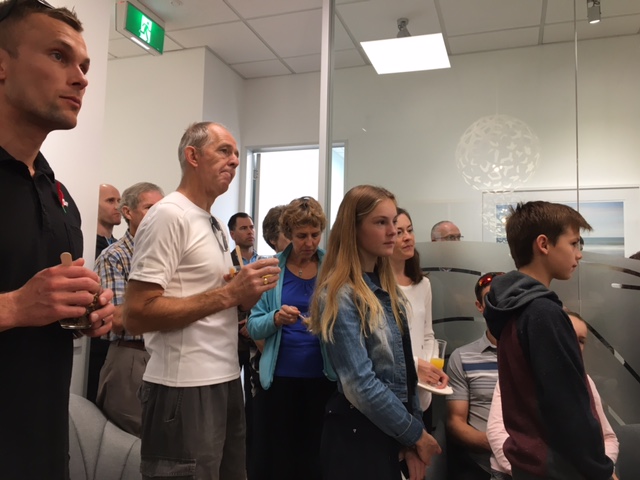Have you ever wondered if micro-needling is for you? Read our editorial in the latest Focus magazine below to hear about Rachel’s experience with us…..
Melanoma Summit NZ
Ben has been presenting at the MELNET NZ melanoma summit in Auckland over the weekend. This meeting gathers experts from around NZ and Australia to educate and provide updates on the latest progress in melanoma prevention, diagnosis and management. Ben was chairing the session on difficult cases at the clinical pathology interface. Great to see the commitment in NZ to tackling this disease and the outstanding progress that has been made in recent years.
What to expect at a skin check....
It can be a daunting experience.
Walking into a strange place, with people you don’t know, not knowing what they’ll find, and what the outcome will be.
Even though skin checks are essential, they’re not easy. We know this.
And that’s why we do everything in our power to make you feel as comfortable as possible from the moment you step through our doors, to the moment you leave.
But don’t take it from us, take it from one of our first-time clients. We asked them to document their experience getting their first ever skin check at SKIN.
Here’s what they had to say.
---
I won’t lie to you, I was quite nervous going for my first skin check. I’m not usually a nervous person, but something about exposing myself to a someone I’d never met before made me anxious.
Little did I know, I had nothing to worry about.
I was greeted by friendly, smiling faces in an instantly calming atmosphere. The receptionists made me feel very welcome and my nerves were instantly dulled. Although, as I sat in the waiting room, the thought of having to show my body to someone still made my palms sweat.
The time came where I was called in by Dr Ben Tallon. And again, I was instantly calmed by his soft, welcoming nature.
We sat down and he asked why I wanted a skin check done. I told him I’d never had one before and I want to be on the safe side, and want to look after my body the best I can.
Dr Tallon also asked if there were any particular moles or spots I was worried about or had noticed. Previous to the appointment I had taken the time to look over my body in those more sensitive areas to see if there was anything to report on. By doing this I was able to direct Dr Tallon to any questionable moles.
I got into a robe, keeping my bra and underwear on. In order for Dr Tallon to check my back, I stayed standing whilst he scanned my complete back, from head to toe (including my scalp!). He commentated on everything as he went and warned me if he was going to move clothing items. It was a definite comforting approach.
To scan my front, I laid down on the bed. Again, Dr Tallon talked through where he was looking. And by this point I felt completely at ease.
My feelings of ‘I have to get naked in front of someone I don’t know’ had changed to ‘wow, why was I so worried.’
Dr Tallon proved is a highly professional Dermatologist who is medically trained to spot and diagnose suspicious moles. The skin check was over quite quickly and thankfully there were no suspect moles found. Phew.
I walked away from SKIN feeling relieved, comforted and happy that I’d been checked over and officially have nothing to worry about. It felt great and I would go back in a heartbeat. And without all those nervous tensions.
The vibe and experience I got from SKIN in general, is that they are the best of the best. I felt I was in the safest hands in a building that was built for exactly what they do, taking care of people’s skin. Everything about my experience was a 5-star rating.
Thanks SKIN, you’ll see me again for my next check up in a year.
---
It’s experiences like this that make us proud of what we do. We pride ourselves on delivering nothing but excellence. With our main focus of keeping you (our client) comfortable and safe.
To book in for a skin check-up, please don’t hesitate to call 07 571 5548 or email skindermatologyinfo@gmail.com.
We look forward to hearing from you.
Sunspots
Sunspots, also known as age spots are caused by overexposure to UV light.
Sunspots can appear at any age but are most common in the over 40’s who have had prolonged exposure to the sun.
The skin’s defence to prolonged time spent in the sun is to produce melanin. The melanin clumps together to form darker patches and is trying to protect the layers of skin beneath. It’s these darker patches that are known as sunspots.
Though sunspots are not a form of skin cancer they are a warning sign that the skin has been exposed to too much sun, and they do increase the risk of skin cancer.
As sunspots appear on the top layers of skin there are several remedies to reduce their appearance by treating the outer layers of skin. These remedies are best performed out of the hot, summer months and with very limited/no exposure to the sun immediately after having treatment.
At SKIN we have various methods to treat sunspots. And sometimes having combined methods can totally eliminate the sunspot altogether.
Our appearance medicine doctors and nurses create tailor made treatment plans for sunspots and will advise you on one (or more) of the following treatments to tend to your skin.
Using a vitamin A cream to lighten dark sunspots
Retinol found in vitamin A creams can speed up skin cell activity and moves the pigment up and out of the skin. This reduces the dark patches of skin.
However, depending on how long the sunspot has been developing for, and how deep it is in the skin, using a vitamin A cream may not provide results.
There are several types of Vitamin A creams. The creams you can get over the counter often do not contain enough vitamin A to make a difference. SKIN can prescribe vitamin A creams that need to be used with caution and strict instructions, but are very effective form of skin rejuvenation.
Find out more about using vitamin A.
TCA Peels removes the outer layer of skin
When a TCA peel is applied to the skin it causes the top layer to dry out and peel, leaving a new, undamaged layer of skin.
By removing the outer layer, you can reduce the appearance of the dark sunspot, leaving it lighter and less prominent.
Depending on how deep the sunspot goes, you may need a series of peels over a period of time in order to reduce the dark patches significantly.
Liquid nitrogen can remove some skin spots
Liquid nitrogen is used to freeze and destroy the pigment completely. Once applied, it freezes the area to -196°C. Days to weeks later the skin peels that layer of skin away.
Once again, whether the area can be completely removed of the dark patch or not, will depend on the depth of the sunspot.
Dermapen® is micro needling technology that rejuvenates skin
Dermapen® is used for many skin conditions to encourage natural collagen growth.
The micro-needling technology penetrates the skin, which forces the skin to puncture, forming small wounds. This then starts the skin’s healing process by peeling a layer of skin, leaving a new brand new layer of skin underneath.
By removing the top layers of skin it can reduce the darkness of sunspots and can be repeated over a period of time to get the desired outcome.
All of these treatments can be used in conjunction with each other when an experienced doctor or nurse has designed the personal treatment plan. The team at SKIN will get you the best possible results and reduce your sunspots safely and effectively.
Get to know our treatments and our expert appearance medicine team a little better, and how we can help you achieve beautiful skin.
Mohs Surgery
Having any type of skin cancer is scary and you have the right to feel anxious and nervous about it.
But you also should know, that if detected early, it is highly curable.
And by seeing a specialist skin cancer doctor, you’ll be able find the most efficient way of treating your cancer.
Mohs surgery is known as the most effective procedure for skin cancer removal of the face and neck. With Mohs surgery, the skin cancer can be removed in one session. The step-by-step process allows for your skin excision to be examined there and then. In standard surgery, the excision is sent off to a laboratory and will take a few days for the results. This also has the risk of needing further surgery if the cancer was not been fully removed.
At SKIN we are passionate about Mohs surgery. It’s a highly effective surgery that allows you to feel as relaxed as possible. We have built a specialty team who are highly experienced and qualified to perform Mohs surgery.
Here’s why SKIN is so unique when it comes to Mohs surgery, and any type of skin cancer removal.
Dr Ben Tallon
Dr Tallon is the only practicing Dermatopathologist with International Board qualifications in New Zealand. That means you’ll be receiving the best possible diagnoses there is. Dr Tallon has extensive experience with skin cancer removal and Mohs surgery.
Depending on where the skin cancer is on your body, it will require a careful reconstruction of the skin to make the scarring as minimal as possible. Dr Tallon is a perfectionist and has an amazing talent to make sure your scar is as small as it can be by taking grafts from other, less prominent areas of the body.
An Expert Team
In order for Ben to do his job efficiently we have developed a highly qualified team to allow our service to be the best.
We have specialty Mohs Technicians who prepare the excisions, ready for Dr Tallon to examine. Our technicians are highly experienced and knowledgeable and play a integral part of the procedure.
We have specialty Dermatology Nurses, who work alongside Dr Tallon during surgery making sure you get the best possible attention.
In and out in one day
Waiting for results is no one's ideal situation. Especially if the result is a bad one and the uncertainty continues. Mohs surgery is one day surgery, same day results.
The process can take one to two hours and depending on the results of each of the skin excision will depend on if the process will need to be repeated.
The Mohs surgery method allows you to have peace of mind when you leave and has limited disruption time on your life.
Comfortable, relaxing surroundings
Our primary focus is for you to feel as relaxed as possible. That’s why we’ve created our brand new, purpose built clinic. We’ve custom made our clinic and waiting rooms to make you feel comfortable throughout the process.
Because Mohs surgery is designed for the patient to wait for results, we want your waiting time to be pleasant, that’s why you can expect tea, coffee and homemade cake at your fingertips.
We also advise bringing along a book, or your own music to make the time go nice and fast.
Gold star service
SKIN provides the gold star treatment from when you walk in the door to follow up appointments.
Prior to the appointment we’ll let you everything you need to know. We can also advise you on the best way to deal with anxiety towards the surgery.
We understand the worries you might have and it’s our job to put you at ease.
And once the surgery is complete and you’re at all concerned with the final outcome we will do anything possible to put these concerns to bed, leaving you feeling nothing but confident.
If you have any queries about skin cancer removal and wondering if Mohs is the right option for you, please get in touch.
Three solutions to getting a 'Youthful Glow'
Let's face it, we’ve all got them.
Those facial features that scream out at us when we look in the mirror.
The constant prodding, pulling, stretching that we do to ourselves to see what we’d look like if that loose sagging skin wasn’t there.
If only to be 19 again.
But there’s no point point dwelling on the past. Look to the bright future and some of the amazing treatments out there to make you feel confident and happy in your skin.
That’s where facial treatments and medicine come in.
And to get the look you’re after you should check out the three solutions below. One could be just the answer to your problem.
#1 TCA Face peels
What is a TCA peel?
TCA (trichloracetic acid) is a relative to vinegar and is a non-toxic chemical. When applied to the skin it cause the top layer to dry out and peel, leaving a new, undamaged layer of skin.
What does a TCA peel treat?
Peels are used to treat skin problems such as:
- Sun damage/sun spots
- Ageing spots
- Pigmentation
- Fine wrinkles
- Acne scarring
Is a TCA peel safe for your skin?
Peels are completely safe when performed by a professional with experience. Together with your Dermatology Doctor or Nurse you’ll decide if a TCA peel is right your skin condition.
They will prescribe an individual treatment plan that will give you the best result.
What can you expect from a TCA peel?
A TCA peel starts with a full skin cleanse to remove any excess oils that would prevent the peel from working effectively.
Different strengths of peels are then selected depending on your treatment plan and applied to the skin, until they achieve the desired reaction. The skin is then thoroughly washed and moisturised, with instruction to carefully protect the skin from sun exposure.
While one peel may be all that’s needed, three peels are often recommended to build on the improvements seen with each treatment.
#2 Botox®
Botox® and fillers are amazing products that help eliminate wrinkles, making skin look firmer and younger.
What is Botox® used for?
Botox® (Botulinum toxin A) is a neurotoxin widely used as a non surgical treatment to target fine lines and wrinkles. It paralyses the localised muscles, stopping them from contracting which then stop facial lines and wrinkles from appearing.
This is not as scary as it sounds. And as long as it’s being administered by professional people, it’s completely safe.
What do you need to be careful of?
Some people steer away from Botox® because they’ve seen the effects of overuse and a far from natural look outcome. With experienced doctors and nurses managing your treatment plan, this won’t happen.
Botox® is not permanent and may take a few treatments to get the desired result. All this should be planned out with your doctor or nurse.
Is Botox® right for me?
Botox® can treat many areas of the face, from crows feet and forehead lines, to lips and smiles. There are also specific procedures that help you get the exact look you’re after. The best thing to do is to talk to an experienced doctor or nurse and work through a personalised treatment plan.
#3 Belkyra®
What is Belkyra® used for?
Belkyra® contains a synthetic version of deoxycholic acid which imitates the body’s naturally occurring deoxycholic acid. It is used to reduce the fat around the chin area by dissolving fat cells and minimising the double chin.
Once the targeted fat cells have been injected under the chin the body’s repair system takes away the dead cells and excretes them out of the body.
What can you expect from the treatment?
The procedure is very straightforward. You can expect anywhere between 2 and 4 (max 6) treatments that happen 4-6 weeks apart.
Recovery and downtime are variable on each patient but generally it’s very little downtime.
Some side effects you may see are bruising, pain, numbness, redness and areas of hardness, but after subsequent treatments these will lessen as there is less fat to target.
How to choose the right treatment for you.
Having treatments to your face can be scary and nerve wracking. But when you work with a experienced professional, those feelings should go away. Leaving you feeling comfortable and happy with your treatments and outcome.
As a skin expert clinic we have qualified doctors and nurses to perform these cosmetic treatments in a safe and controlled environment.
We love to help our patients feel happy in their skin and will always give them an honest, professional opinion on treatment options.
If you have more questions or want to book a consultation, please give us a call on 07 571 5548 or send us a message.
Vitamin A
Vitamin A is essential and multi-functional for the human body.
Your body needs it to work properly and to maintain healthy organs, vision, immune system and reproduction.
And it’s multi-function wonders don’t stop there.
When looking for anti-ageing solutions, vitamin A cream is at the top of the list.
But be warned.
Even though vitamin A is in a lot of anti-aging creams, often they don’t contain enough vitamin A to make a difference. And sometimes, all you’re buying is an expensive moisturiser.
We want to help you understand vitamin A better so that you can get the most out of it.
What is vitamin A?
Vitamin A is a fat-soluble vitamin that has many uses for your health.
Vitamin A is also be known as retinol. Retinol is a compound found in animal products and plants. It’s also naturally produced in your body.
The antioxidants found in retinol have proven to be highly effective for overall health. And particularly good for your skin.
Vitamin A uses
Other than taking care of your organs, giving you healthy vision and supporting a good immune system, vitamin A has proved to help with skin conditions.
Vitamin A is known to increase collagen production and increase water retention in the skin which can effectively remove fine lines and wrinkles. It can also smoothen complexion by lightening areas of sun damage related pigmentation in the skin.
Other skin conditions such as acne can be helped by vitamin A also. The antioxidants and reduced oil production can help clear clogged pores.
Using vitamin A topically vs orally
Vitamins are often taken in capsule form. For some vitamins it’s the most effective way for your body to utilise them. It’s usually dependant on how they are broken down/absorbed by the body and also if they are sensitive to light or temperature.
In the case of using vitamin A for skin anti-ageing, it’s best to use a cream. It has the best proven results for reducing fine lines and wrinkles.
When taking vitamin A for other body functioning benefits,you can up your intake through food.
Foods that are high in vitamin A:
- Liver and fish oils
- Milk, cheese and egg yolks
- Rich green leafy vegetables; kale, spinach and broccoli
- Orange and yellow vegetables; sweet potato, carrots and dried apricots
But remember the importance of a healthy balanced diet. As with anything, too much of one thing can be detrimental.
The science behind vitamin A skin creams
Retinol is a specific form of vitamin A and has been used in skin creams to reduce fine lines and ageing. When it’s applied topically, enzymes in your skin convert retinol into retinaldehyde and then into retinoic acid.
Retinol is naturally gentle, it’s results are slower and has fewer side effects than stronger creams. The conversion into retinoic acid can take at least a few weeks, which is why you should use retinol products consistently for a few months before expecting to see results.
There are stronger forms of creams such as Retin-A, it’s a prescription-only tretinoin cream. Tretinoin is another name for retinoic acid. Because it is a form of retinoic acid, Retin-A does not need to be broken down by the enzymes in your skin before it can be used.
Retin-A is approximately 100 times stronger than the average retinol cream and has dramatic, speedy results — diminished blemishes, reduction in wrinkles, boosted skin elasticity. But also can have major side effects. Due to its strength, Retin-A can cause itching, scaling, burning, peeling, and extreme redness if not introduced carefully.
Traditionally, Retin-A has only been prescribed for treating acne; however, some dermatologists are also now prescribing it to patients eager to reduce lines and improve skin firmness.
Using prescribed vitamin A cream
We prescribe a tretinoin cream called ReTrieve in cases of dry, sun-damaged and related conditions. Depending on your condition and how your skin reacts to the cream we’ll suggest different regimes. But here are the basic dos and don'ts:
- Apply to washed, clean skin.
- Use only at night as it can react to daylight.
- Do not use on sunburnt skin.
- Some redness and irritation is expected initially but consult your doctor if side effects are harsh.
- Avoid excessive sunlight, sunlamps, strong wind, dry air, harsh soaps and harsh exfoliants.
Get personal advice on your skin
We want you to feel amazing in your skin and we will do anything we can to help you achieve the results you want in a safe and healthy process.
Get in touch with us at the clinic on 07 571 5548 and we can talk through some options.
Meet Dr Anuya Deshpande
Qualified expert geniuses don’t come around very often.
In fact, they’re extremely rare.
So when SKIN had the opportunity to bring Dr Anuya Deshpande to the team, we jumped at it.
Dr Anuya has brought with her a wealth of expertise and experience. And we are lucky to have her here in Tauranga.
If you'd like to know more about Dr Anuya and how she can help you, read on. We think she's an absolute delight (although she does have rather ironic TV watching tendencies).
Background
Anuya graduated in 2001 with a Bachelor of Medicine from Manchester University. And in 2006 became a Member of the Royal College of General Practitioners.
After working as a GP in the UK for several years, she came to New Zealand in 2006 to work as a GP locum in Gisborne.
Her passion was always to combine art and medicine. So she pursued cosmetic medicine.
In 2008 she founded Skin Deep, a cosmetic medicine clinic. It quickly expanded as her reputation spread as a friendly thorough doctor who gets results for her patients.
As demand grew she gained qualifications and experience in cosmetic medicine, phlebology (varicose vein treatment), dermatology and skin cancer medicine.
After 12 years in Gisborne, she and Kiwi husband Marty Gibson decided to move to the Bay of Plenty. Anuya has teamed up with Dr Ben Tallon to offer varicose vein treatment, cosmetic medicine and skin cancer services here at SKIN.
Experience, skills and philosophies
17 years of medical experience. 7 years in cosmetic medicine and varicose vein treatment.
With her extensive medical background, Anuya adheres to strict protocols when it comes to cosmetic medicine to ensure patient safety.
Anuya found that combining her GP work with cosmetic procedures, her patients were more at ease when undergoing treatments.
Her philosophy in cosmetic medicine is to restore balance to the face and body to achieve natural results.
She is able to perform non-surgical, varicose vein treatment with no general anesthetic. It can be a walk-in, walk-out procedure with very limited downtime.
Qualifications
Are you ready for a long list?
Anuya has worked extremely hard to obtain these qualifications, making her the multi-talented, highly-skilled Doctor she is.
- MBcHB (Manchester) 2001
- DFFP (UK) 2004 Diploma of Faculty of Family Planning
- MRCGP (UK) 2006 Member of the Royal College of General Practitioners
- Dip NZSCM (NZ) 2011 Diploma New Zealand Society of Cosmetic Medicine
- FRNZCGP (NZ) 2013 Fellow New Zealand College of General Practitioners
- Dip Microsclerotherapy (Australia) 2013 Australasian College of Phlebology
- Dip Practical Dermatology (Cardiff) 2014
- Dip Procedural Phlebology (Australia) 2015
- Cert in Skin Cancer Medicine (Australia) 2017
- Cert in Dermoscopy (Australia) 2017
It’s safe to say, you’re in safe hands.
Weekend activities
We couldn’t let you go without telling you what Anuya gets up to on the weekend and a little more about what makes her tick.
With her husband and three children, you’ll find Anuya at the park, on the Papamoa trails or getting wet at the beach. She loves what the Bay has to offer.
She also gave us some interesting facts about herself:
Favourite TV show - Botched, MKR or Grey’s Anatomy (ironic huh)
Favourite place - Florence, Italy
Favourite food - Greek salad and more recently, Mama’s donuts opposite SKIN. (Dangerously close)
Could Dr Anuya help?
If you’ve read this and feel Dr Anuya could help with any of your health matters, she would love to hear from you.
Give us a call at the clinic on 07 571 5548 and we’ll put you in touch.
In the weekend....
In a spare weekend Dr Tallon helped out a friend Paul plan out a route for his Running High guided trail runs. Mt Rolleston in the background.
SKIN Open Day
To promote awareness of Melanoma, SKIN teamed up with Melanoma NZ for the opening of the Tauranga Specialist Centre. Minister Simon Bridges raised a toast to the building, and was accompanied by the Mayor Greg Brownless and the Deputy Mayor Kelvin Clout. We discussed that while we are fortunate to have highly qualified specialists in skin cancer in the Bay of Plenty, there is a need to push for an improvement in our Melanoma rates by improving compulsory hat policies in schools and banning sun beds.
We also showcased the building's eco friendly design, with its extensive array of solar panels, solar power emergency back up supply and car charging capabilities.








